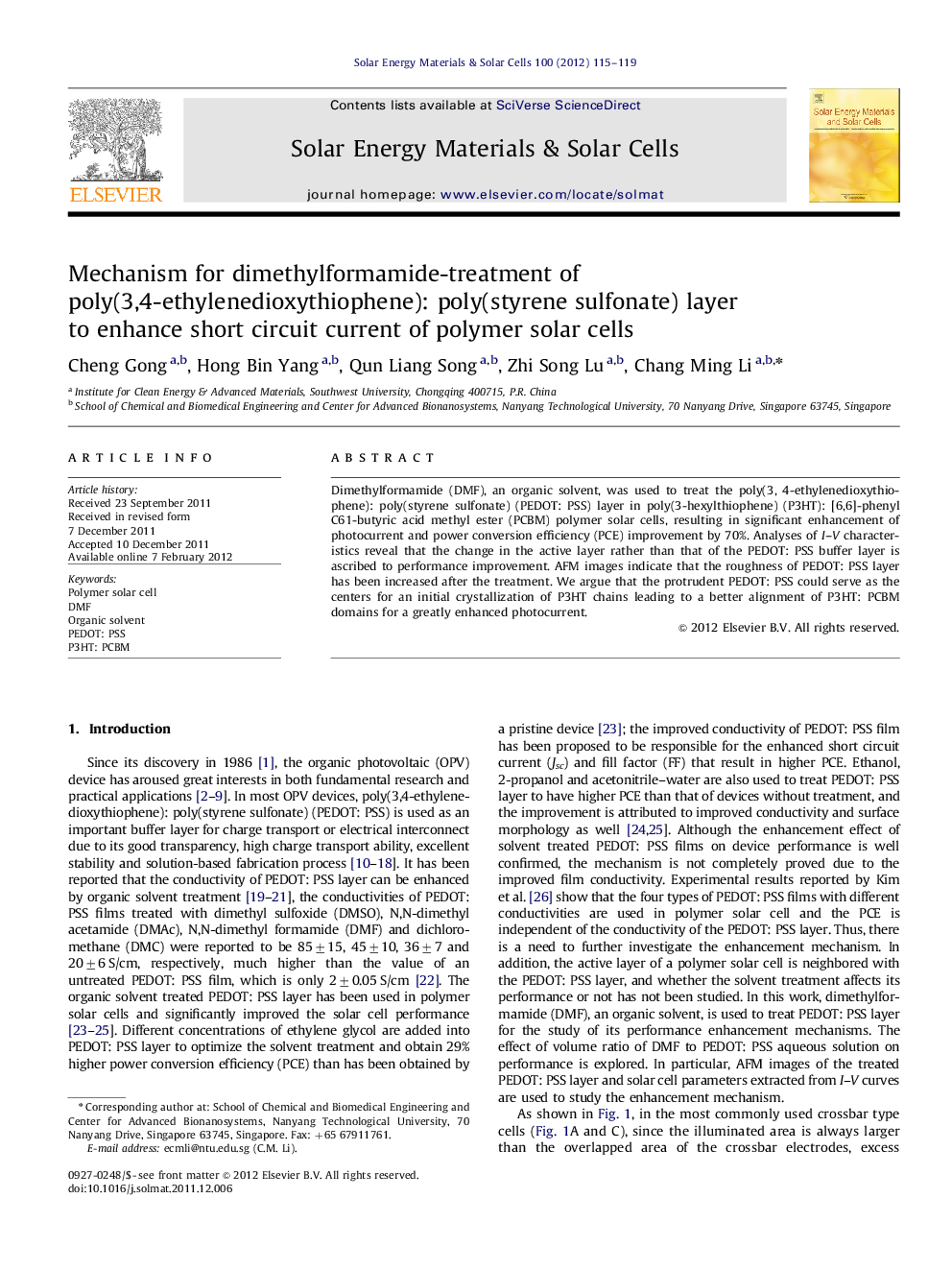| Article ID | Journal | Published Year | Pages | File Type |
|---|---|---|---|---|
| 78381 | Solar Energy Materials and Solar Cells | 2012 | 5 Pages |
Dimethylformamide (DMF), an organic solvent, was used to treat the poly(3, 4-ethylenedioxythiophene): poly(styrene sulfonate) (PEDOT: PSS) layer in poly(3-hexylthiophene) (P3HT): [6,6]-phenyl C61-butyric acid methyl ester (PCBM) polymer solar cells, resulting in significant enhancement of photocurrent and power conversion efficiency (PCE) improvement by 70%. Analyses of I–V characteristics reveal that the change in the active layer rather than that of the PEDOT: PSS buffer layer is ascribed to performance improvement. AFM images indicate that the roughness of PEDOT: PSS layer has been increased after the treatment. We argue that the protrudent PEDOT: PSS could serve as the centers for an initial crystallization of P3HT chains leading to a better alignment of P3HT: PCBM domains for a greatly enhanced photocurrent.
Graphical abstractFigure optionsDownload full-size imageDownload as PowerPoint slideHighlights► The mechanism for DMF treatment of PEDOT-PSS layer to enhance performance of P3HT solar cells has been shown. ► DMF treatment significantly increases the power conversion efficiency by 70%. ► The roughness of PEDOT: PSS layer is increased after the DMF treatment. ► The changes in active layer after the DMF treatment are the main factors to enhance photocurrent.
